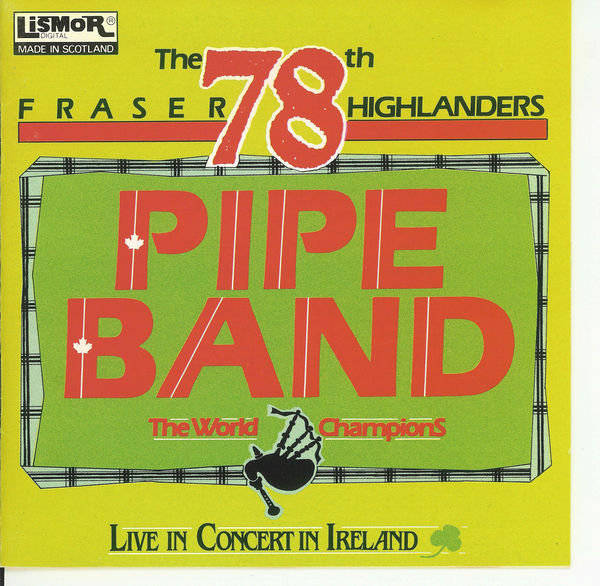In this age
The RSPBA recently “aged out” three of its judges. Dixie Ingram, Joe Noble and Ian Wood each reached the age of 75, so they can no longer serve on the Scottish association’s panel.
(I have no idea if any of these gentlemen wanted or thought it best to retire. They’re only this year’s examples and, by the way, to each of you, thank you for your long service to pipe bands.)
My understanding of the RSPBA’s rules about judges and age is that, once an adjudicator turns 70, he or she has met the official retirement age. But after 70 they can apply annually if they want to continue, confirming their health and continuing ability to judge. The application is considered by the association’s Adjudicators’ Panel Management Board and then approved by the Board of Directors, all young whippersnappers, I’m sure.
I don’t know how they assess. Perhaps the 70-plus judges have to show that they can walk around a large circle in allotted time period. Maybe they have one of those sound-proof beeping booths with the 1960s headphones, asking adjudicators to raise their hand when they hear various pitches and tones. (If not, please consider as part of the general accreditation exam, including a bit to recognize notes that are sharp or flat . . .)
It’s sort of like driving licenses for old folks, but far less a matter of life-and-death. One slip of the pen might bury a band, but that’s better than a four-thousand-pound automobile careening into oncoming traffic. As far as I know, after age 70 people in the UK can re-sit driving exams every three years until they can’t.
However, for RSPBA judges, officials and directors, at age 75 that’s it. No choice in the matter. Your career of standing out there, often in the horizontal rain, is over, no matter how young a 75-year-old you might be. No more cups of tea and watercress sandwiches for you. No more £75 daily fee. The powerful salad days are over, you ancient person!
Of course, there are different degrees of aging, depending on diet, exercise, financial situation and genes. You can lose hearing, of course, which would be a major detriment to judging if it can’t be adequately remedied with increasingly sophisticated in-ear aides.
You can lose mobility, making you less able to walk around a band to hear the one piper in the corner who’s blootering along. (Then again, there’s no requirement for a judge to move at all, and some able-bodied folks like to wear out one patch of grass all afternoon, some never budging from their wee hut.)
I’d be careful with the hard-and-fast age 75 deadline (as it were). People today are overall in far better shape than they were even 20 years ago. There are wildly different versions of 75. Our top pipers and drummers are successfully competing and performing longer than ever, often because their professional piping and drumming careers built on teaching and selling stuff depend on upholding their “brand,” and the best personal brand marketing in this particularly industry is playing well publicly. So they’re finding ways to keep going.
There will be more and more top exponents of the art who, like Bill Livingstone, ultimately decide to pack it in only when they’re well into their seventies, leaving just a handful of years for the world to benefit from their adjudication wisdom, even if they might be twice the physical fitness and an order of magnitude more knowledgeable and qualified than judges half their age.
The RSPBA might want to examine its ageist policy. Categorically sending still-spry judges off to the figurative glue factory is ill-advised, that is, in this day . . . and age.

 Reeds do it. Metres do it. Even educated beaters do it. Let’s do it. Let’s fall apart.
Reeds do it. Metres do it. Even educated beaters do it. Let’s do it. Let’s fall apart.
 Plastic drones. They’re here and they will soon be played and win prizes at every level.
Plastic drones. They’re here and they will soon be played and win prizes at every level.


 Pipe bands often have a tough time handling sensitive information, such as the dismissal or departure of leaders. These days, moves like these are rarely amicable and smooth, and often sink into a quagmire of he-said-she-said confusion.
Pipe bands often have a tough time handling sensitive information, such as the dismissal or departure of leaders. These days, moves like these are rarely amicable and smooth, and often sink into a quagmire of he-said-she-said confusion.
 More often than not, Highland games and contests put on by non-piping/drumming groups have little or no idea as to how to run the events to achieve the best experience for competitors. Some contests of course get the oversight of associations.
More often than not, Highland games and contests put on by non-piping/drumming groups have little or no idea as to how to run the events to achieve the best experience for competitors. Some contests of course get the oversight of associations.
 There are those pipe bands that have and those that have not. And increasingly there are competitions and Highland games that have and have not. The size and success of bands and competitions are linked.
There are those pipe bands that have and those that have not. And increasingly there are competitions and Highland games that have and have not. The size and success of bands and competitions are linked.
 The grand old Crieff Highland Games deciding, at least this year, to drop solo piping competitions from its day in August is certainly a shame for piping tradition, but it’s emblematic of the challenges facing event organizers — and us.
The grand old Crieff Highland Games deciding, at least this year, to drop solo piping competitions from its day in August is certainly a shame for piping tradition, but it’s emblematic of the challenges facing event organizers — and us.

 A week has already gone by since Piping Live! and the World’s wrapped. It was another terrific week of piping, drumming and musical (and other) excess. The planning involved to put on the Festival and the World’s never cease to astound, and every year each event seems to improve.
A week has already gone by since Piping Live! and the World’s wrapped. It was another terrific week of piping, drumming and musical (and other) excess. The planning involved to put on the Festival and the World’s never cease to astound, and every year each event seems to improve.







 There was a recent cartoon in The New Yorker magazine that to put the Highland pipes on the same level of abuse as the American banjo. We all know that the pipes are much maligned (mainly by those who only know them by the ear-wrecking sound of rank novices who refuse lessons, with no interest in improving, who insist on publicly displaying their inabilities – our own worst enemies), but the banjo? I always thought it added instant happiness to all genres of music, including its native bluegrass. Who doesn’t like the banjo?
There was a recent cartoon in The New Yorker magazine that to put the Highland pipes on the same level of abuse as the American banjo. We all know that the pipes are much maligned (mainly by those who only know them by the ear-wrecking sound of rank novices who refuse lessons, with no interest in improving, who insist on publicly displaying their inabilities – our own worst enemies), but the banjo? I always thought it added instant happiness to all genres of music, including its native bluegrass. Who doesn’t like the banjo? a sense, it gives us the power to see ourselves as others see us.
a sense, it gives us the power to see ourselves as others see us. abuse against it that we see hurled at our treasured bagpipe? Hardly. With few exceptions, and after weeding out references to
abuse against it that we see hurled at our treasured bagpipe? Hardly. With few exceptions, and after weeding out references to 













